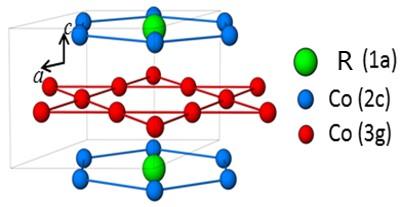
CMI researchers at Ames Laboratory conducted the activity for this highlight
Innovation
An ab-initio coupled crystalline electric field modeling to enhance ( > double) the magnetocrystalline anisotropy of SmCo5 via Ce substitution.
Achievement
Developed a crystalline electric field modeling mechanism coupled with localized density functional theory calculations and predicted giant magnetic anisotropy and its origin.
Significance and impact
- Crystalline electric field modeling coupled with localized density functional theory correctly predicts magnetocrystalline anisotropy of mixed rare earth permanent magnet materials.
- Identified site substituted SmCo5 uplifts its permanent magnet performance.
- Potential improvement of magnetization via small substitution of Fe.
Hub target addressed
Win industry adoption of three technologies related to materials substitution for rare earth magnet materials.

